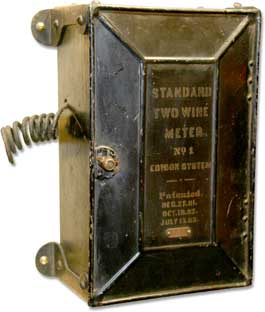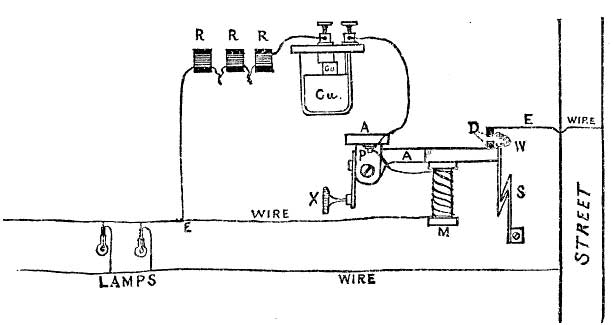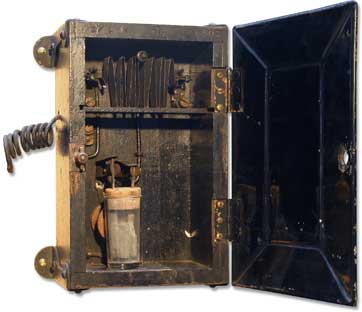| Contact |
| Back | Next | Home |
Electric Power Meters, Transformers, and Rheostats
This page is under construction.
Early Power Meters
The Edison Chemical Meter
Edison set up his first power station in New York City at Pearl
Street. The station began operation on September 4, 1882. In
order to keep track of the electricity used by his customers, Edison
designed the first electric wattmeter, called the "Chemical meter" (see
below.)
|
|
It was a crude device based on the principle of electroplating, developed by Michael Faraday. Faraday had found that the transfer of metal from one plate to another in an electrolytic bath was exactly proportional to the current. Edison's first meter held a small glass jar in which two copper plates were suspended in a solution of copper sulphate. The cover of the cell was arranged so that one of the plates was easily removable by means of an insulated clamp with a thumb screw; the other plate, which was thick and cylindrical in form, was intended to remain in the cell to allow the copper to be transferred from it to the other plate via electrolysis. An Edison employee would visit the meter periodically, remove the electrode and weigh it, and the customer would be billed accordingly.
While the concept worked well in theory, in practice it was inconvenient and not especially accurate. Worse, there was no way for a customer to independently confirm their consumption of electricity so their confidence in the device was not high. As a result the meters were replaced in short order, and very few can be found today.
|
|
|
|
|
|
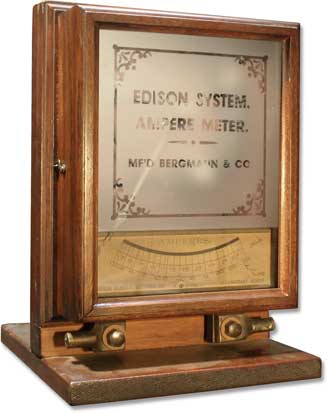 Edison Ammeter Edison General Electric
|
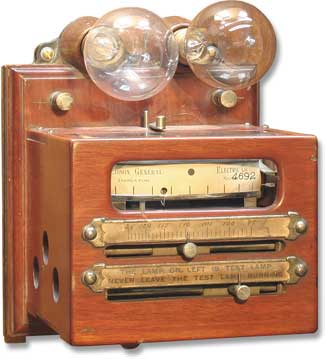 Edison General Electric |
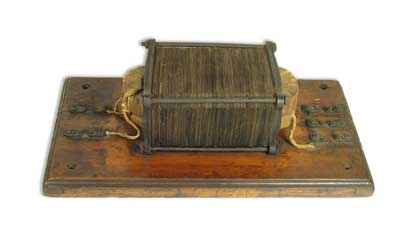 Westinghouse Converter The first AC line transformer ca. 1888 |
|
| Contact |
| Back | Next | Home |
